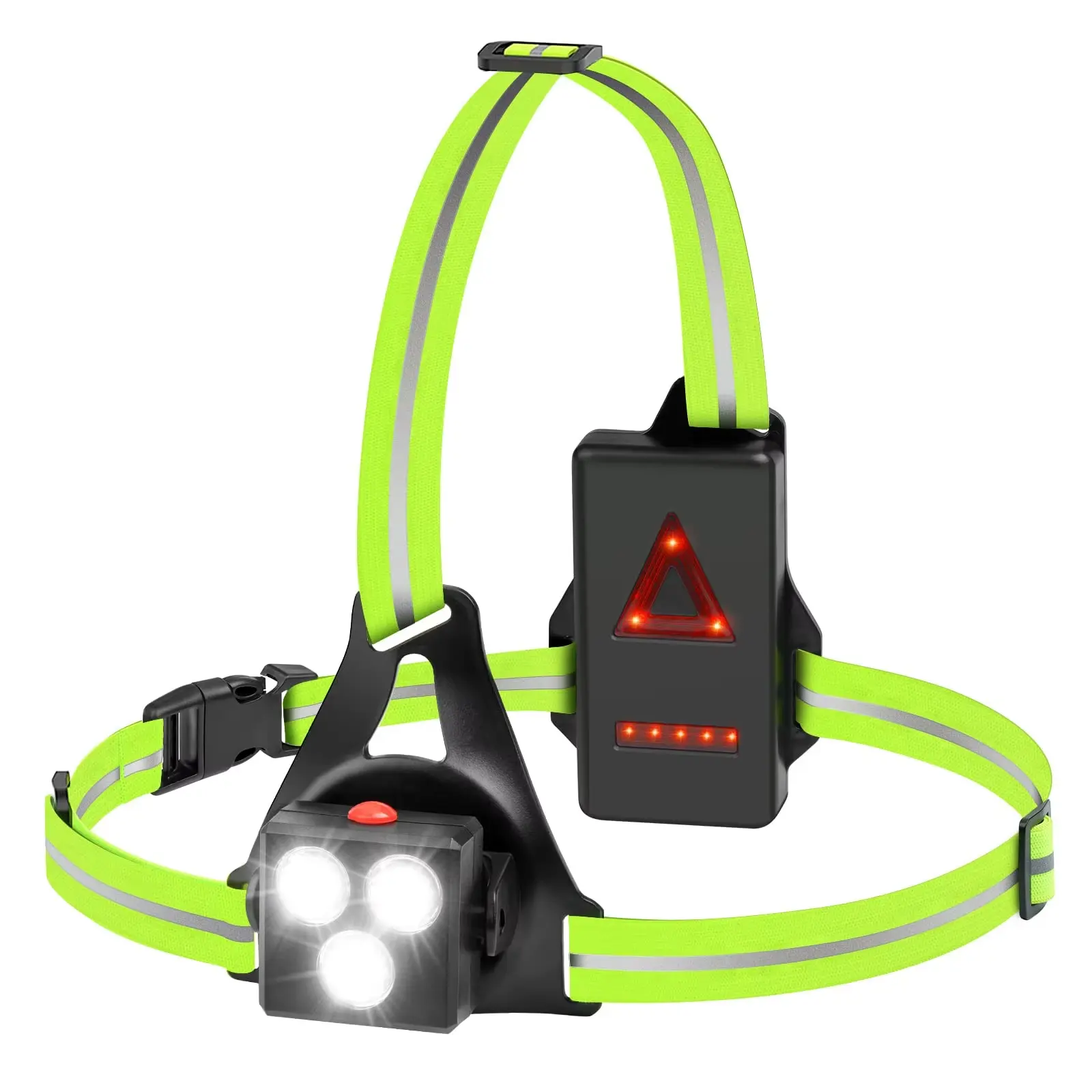Essential Elements of Modern Camping Illumination
The right lighting solution can transform your outdoor adventure from challenging to comfortable. When venturing into the wilderness, a reliable headlamp becomes your trusted companion, lighting the way through dark trails and illuminating your campsite activities. Understanding the crucial camping headlamp features helps you make an informed choice for your outdoor pursuits, ensuring both safety and convenience during your wilderness exploration.
Today's outdoor enthusiasts have access to an impressive array of headlamp technologies, each designed to enhance the camping experience. From basic models to sophisticated lighting systems, the market offers solutions for every type of camper. Let's delve into the key characteristics that define an exceptional camping companion.
Illumination Technology and Performance
Beam Types and Patterns
Modern camping headlamp features include various beam patterns to suit different outdoor scenarios. The flood beam provides wide illumination perfect for camp setup and close-range tasks, while spot beams reach further distances, ideal for trail navigation and wildlife spotting. Advanced models offer both options, allowing seamless switching between modes to adapt to changing conditions.
The quality of light output significantly impacts your camping experience. Natural white light proves most effective for accurate color rendering, helping you distinguish between similar-looking plants or identify trail markers. Some premium models even offer adjustable color temperatures, enhancing visibility in different environmental conditions.
Brightness and Range Capabilities
Lumens measure the total light output, with camping headlamps typically ranging from 100 to 1000 lumens. Higher brightness levels prove invaluable during emergency situations or when navigating challenging terrain. However, consider that maximum brightness often comes at the cost of battery life, making adjustable output levels an essential feature.
Beam distance, measured in meters, determines how far your light reaches. Quality camping headlamps offer multiple distance settings, allowing you to conserve battery power when less light is needed while maintaining the ability to illuminate distant objects when necessary.
Power and Energy Management
Battery Options and Duration
The evolution of camping headlamp features has brought diverse power solutions. Rechargeable lithium-ion batteries offer environmental benefits and cost savings over time, while traditional alkaline batteries provide reliable backup options for extended trips. Hybrid models accepting both power sources give campers maximum flexibility.
Runtime varies significantly based on brightness settings and battery type. Advanced models include power indicators and regulated output, maintaining consistent brightness throughout the battery life cycle rather than gradually dimming. Some feature emergency reserve power, ensuring you're never left in complete darkness.
Charging and Power Management
USB charging capability has become a standard feature in modern camping headlamps, allowing convenient power replenishment from portable banks, solar chargers, or vehicle outlets. Smart power management systems optimize performance, automatically adjusting brightness to extend battery life when charge levels drop.
Look for models with lock functions to prevent accidental activation during transport, preserving battery life. Some advanced units even offer bluetooth connectivity, enabling remote battery monitoring and output adjustment through smartphone apps.
Construction and Durability
Weather Resistance Standards
Reliable camping headlamp features must include robust weather protection. IPX ratings indicate water resistance levels, with IPX4 offering splash protection and IPX7 allowing temporary submersion. Consider your typical camping conditions when evaluating water resistance requirements.
Temperature tolerance becomes crucial for extreme weather camping. Quality headlamps maintain functionality in both freezing and hot conditions, with some models specifically designed for winter camping with cold-resistant battery compartments and anti-fogging lenses.
Material and Build Quality
Impact resistance proves essential for outdoor gear, and camping headlamps should withstand occasional drops and rough handling. Aircraft-grade aluminum and high-impact polymers offer excellent durability while maintaining lightweight characteristics. Look for reinforced battery compartments and sealed electronics housing.
Strap quality significantly impacts comfort and security. Adjustable, moisture-wicking headbands prevent slippage during active use, while quick-release mechanisms facilitate easy removal. Some models feature top straps for additional stability during high-movement activities.

Practical Functionality
Operational Controls
Intuitive controls enhance the user experience, especially in challenging conditions. Large buttons or switches operable with gloves provide convenience during cold weather camping. Multiple switching sequences allow quick access to different modes without cycling through all options.
Memory functions retain your last-used settings, eliminating the need to readjust brightness levels each time you power on. Some advanced camping headlamp features include motion sensors for hands-free operation, activated by simple gestures.
Versatility and Adaptability
Tiltable lamp housings allow precise beam direction adjustment without neck strain. Red light modes preserve night vision for stargazing while providing sufficient illumination for camp tasks. Some models offer removable lamp units, convertible to handheld flashlights or tent lights.
Storage and transport considerations influence design choices. Collapsible or foldable headlamps save pack space, while integrated storage solutions protect lenses and prevent strap tangling. Quick-adjust mechanisms facilitate sharing between users with different head sizes.
Frequently Asked Questions
How many lumens do I need for camping?
For general camping activities, a headlamp with 150-300 lumens provides sufficient illumination. However, having the capability to boost output to 500+ lumens proves valuable for emergency situations or specific activities requiring extended visibility range.
What is the advantage of red light mode?
Red light preserves your natural night vision adaptation while providing sufficient illumination for basic tasks. It also attracts fewer insects and minimizes disturbance to fellow campers or wildlife during nighttime activities.
How long should a camping headlamp battery last?
Battery duration varies significantly based on usage patterns and output levels. Quality camping headlamps typically provide 2-8 hours at high output and 20-100 hours at lower settings. Models with regulated output maintain consistent brightness throughout the battery life cycle.

